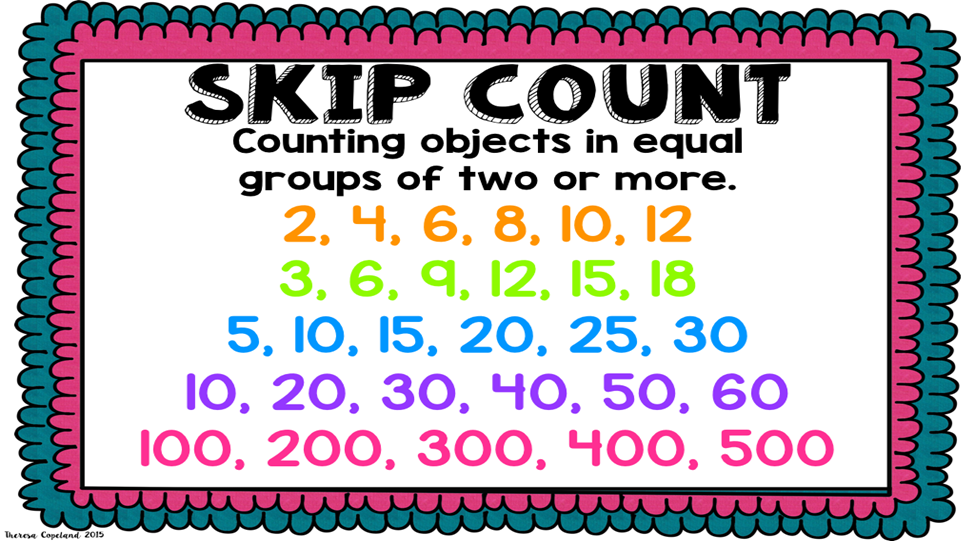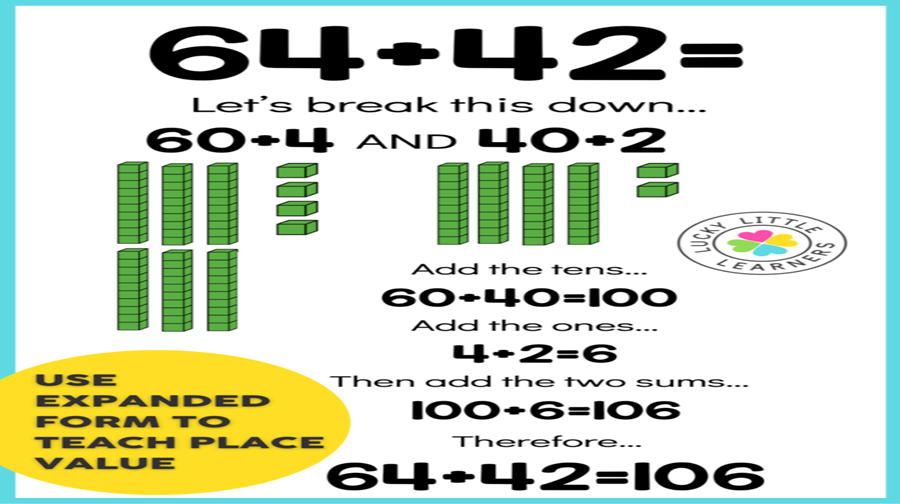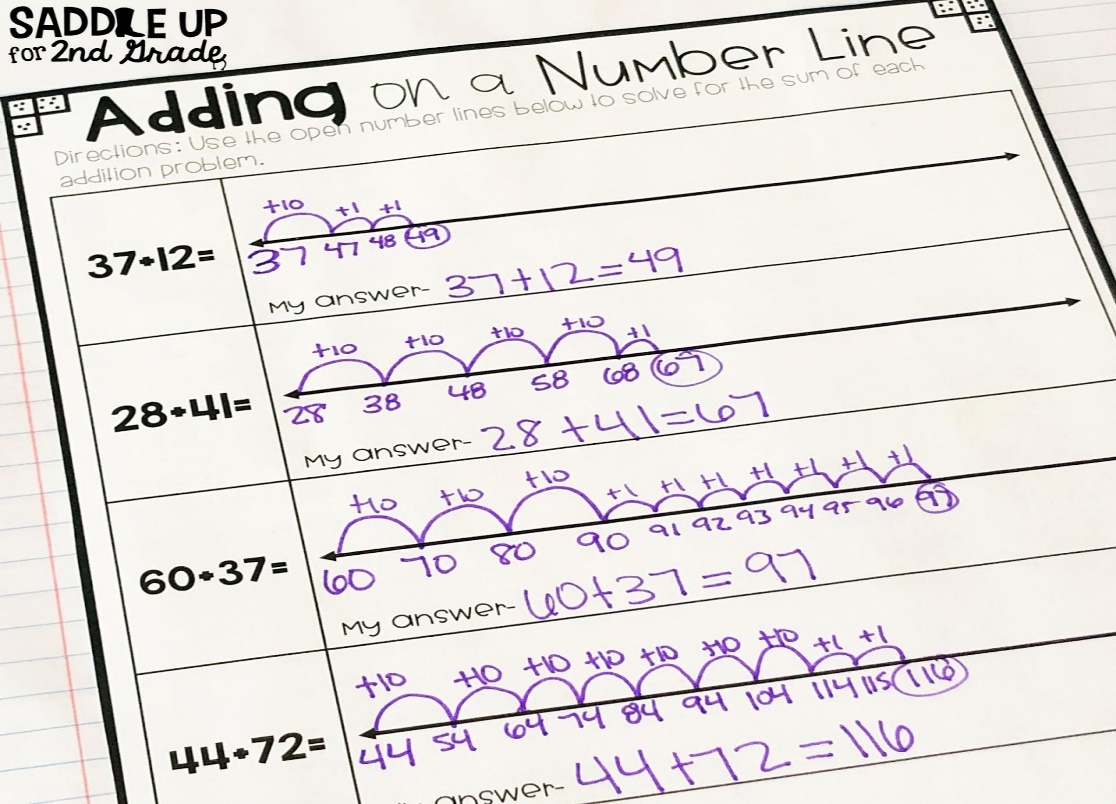Introduction
Globally, in education grade two is a level where students are exposed to mathematical practices such addition of two-digit numbers that require regrouping. In mathematics, rearranging is defined as the process of making groups of tens when carrying out subtraction or addition. In grade two, learners are exposed to various addition strategies that could help in solving their problems. When solving addition problems elementary teachers have been advised to give students numerous options and flexibility to calculate and deduce the right solution. In my class, most students are well conversant with basic mathematics and I have been using different approaches to simplify complex operations for them. However, one of the pupils is having a challenging performing some tasks such as regrouping two-digit figure. As a teacher, I will treat the pupil as special case and formulate new tactics to enable the leaner effectively comprehend how to handle similar mathematic problems. To accommodate and improve the ability of the student, I will utilize the use of skip counting, base ten methods, and expanded form technique, to teach the learner how to add two-digit numbers that require regrouping.
Use of Skip Counting
Generally, skip counting approach is vital technique that can help a learner to understand basic arithmetic. In the case of my student, there is need for the pupil to develop number sense. By using the skip counting technique, I will be able to make the student comprehend the relationship between different figures. In addition, the method has the potential of enhancing child’s mental math ability. For instance, engaging in multiple counts, the learner will develop effective skills necessary for dealing with complex calculation.
In order to use skip counting method appropriately to enhance the ability of the learner to tackle math problem, I will begin using simple additions. For example, I will tell the pupil to skip count by 5s followed by 10s going forward (Ciccione & Dehaene, 2020). In addition, the student will follow the same process but in reverse manner. The approach will improve the learner’s mastery of figures leading to quick identification of various numbers.
Next step will be to introduce the concept of regrouping digits. The phase will enable the learner understand the need for rearranging numbers when performing addition. In this stage, I will effectively elaborate why it is important to regroup numbers especially two-digit figures. Afterwards, I will show the student how to apply skip counting to make regrouping simple. For instance, I will tend to solve a problem such as 33 + 58. I will show the pupil how to solve the arithmetic using skip counting by 10s, 5s, 2s, and 100s as shown in figure 1 below. The technique will make it easier for the student to find the final solution (Stash, 2021). After the first example, I will add more different two-digit numbers for the student to continue practicing using the same tactic. After some time, I will review the strategy to determine the milestone student has reached by applying the operation strategy. I believe frequent usage of the method will reinforce the child’s brain and facilitate quick mental development of math skills necessary to add numbers that need regrouping.

Use of 10 Expanded Forms
The 10 expanded form strategies is essential technique that can help a learner master how to calculate complex operations. During the first few years, students practice writing numbers in their expanded forms to understand the value of the numbers they are working with. This facet includes the use of place values and standard forms. Teachers have realized that expanded forms are important since it allow learners know how to break numbers into values. These methods are especially important for two or three-digit numbers. The method is extremely beneficial and the teacher should ensure that the learner is aware of the place values and writing number in standard form. For example, if a student has been asked to find the total sum of 64 and 42. In this case, the teacher could advise the learner to solve the question using base ten. For example, in figure 2 below 64 becomes a sum of 60 and 4, while 42 becomes a sum of 40 and 2. It is important to say everything out loud and model thinking. The use of physical ten-base blocks is good support.

Use of Familiar Language to Reduce Confusion during Addition
It is essential to ensure consistency in the language used to connect the learner about addition. A grade three class student is still not conversant with inconsistent use of words (Nilsson, 2022). Teachers should learn to use familiar vocabulary such as “what is the total?”, “Find the sum,” and “add the numbers.” It reduces any confusion the student could face since, if asked consistently, he is aware of what he is supposed to do. In most cases, students may fail to grab content because their teacher is using various new words that create confusion. Therefore, if the teacher constantly uses familiar vocabulary when speaking to the weak student, there is a high possibility of ensuring that the student’s addition issue is solved. In the case of the learner, the teacher could be consistent when using vocabularies during regrouping since the learner is having difficulties understanding the concept.
Embracing Enjoyable Activities that Relate to the Addition
Most grade three students love enjoyable activities in the classroom to concentrate and grab enough content. Young children learn best by understanding themselves and the world around them. They develop confidence and resilience that they can use to deal with difficulties they face (Brain science, 2020). The teacher needs to create enjoyable math learning activities during free time in the classroom. This motivates the learner to be psychologically ready to learn new things and be more active during classes.
The teacher could encourage using math games, manipulative and computer games to help the learner grab the content. For example, the teacher could encourage the use of a number line. The use of a number is highly beneficial even though it tends to be challenging for students. The strategy revolves around hopping along a number line. Large hops are draw for ten plus. The inclusion of base ten blocks could be used to visualize the method. For instance, if a student is requested to add 22 and 48, they could use this method. First, they can draw an open number line and write the 48 as the start of the number line since it is large. Base ten blocks could then be used to add other addends in the number line. Large hops of over 10 could be drawn to mentally add. The figure below is an explanation of it.

Additionally, the teacher could embrace the use of visuals and images. The National Council of Teachers of Mathematics states that the most efficient way to use graphics in elementary math is with guidance using tools such as Math seeds. The tools allow students to revisit lessons done previously unto they understand the topic. Therefore, I will consider adding several images to enable the leaner remember key concepts discussed in every lesson.
Use of Storytelling
Teachers who use storytelling in their descriptions of problems allow students to understand how they could apply mathematics concepts in real life. For instance, in the case study, the teacher should understand what the students like to grasp their attention. For instance, if the learner loves football, the teacher could use football stories to help the learner solve calculation problems (Warstillo, 2023). This facet helps the student to understand how math is relevant in their daily life, including its relevance. A perfect example is the Math seeds online program that uses animated story problems to help learners apply mathematics. This program is helpful, especially if the student is given extra work to handle during their free time. After the teacher has guided the student on using the program, they can work independently and check out solutions on the following pages.
Standard Algorithm
The standard algorithm could be used to perfect and review addition. The technique is useful in enabling the learner to have deep insight on the math problem (Nemeth et al., 2019). It is more about applying what you know than understanding a given routine. Therefore, the method is best applied if students know other strategies. The number sense gained in all previous additions could be applied in standard algorithms (Warstillo, 2023). The method allows time for borrowing and regrouping; hence they understand why numbers move to the next column. In this case, the teacher could teach the learner the two main rules of the standard algorithm. For example, during addition, it is vital to ensure that when the sum is less than nine, it is left to rest; when it is more than ten, it should be carried next door.
In this method, students are trained to line up addends vertically. They are expected to know the place values hence add the numbers in the ones place then the tens place. The teacher could encourage the students to use a highlighter to highlight in the ones place to help them visualize reducing any confusion. The concept is difficult for students since they are taught to read and write from left to right.
Creating Awareness
The teacher needs to note that it is easier for students to get confused and carry to strange places. Therefore, to help the needy student, the teacher could emphasize the importance of keenness and ensure that the student occasionally practices the calculations. The teacher could encourage other students in the classroom to constantly help the learner add any numbers if she reaches out. In addition, the teacher could set up a timetable that weak students could use to divide the topic and revise well. The correct concept at the right time could help solve the calculation issue (Aguilar, 2020). In most classrooms, it is advised to have anchor charts. Anchor charts are artifacts in classroom learning that holds ideas and processes in place. They are displayed prior to learning and build as lessons continue. For instance, the chart below is a clear display of how teachers can use the anchor charts to remind students of how the important steps needed to improve their addition.
The teacher could encourage the learner’s parents to constantly create free time to do sums alone and later be corrected to identify their weak and strong points. The parents could also be requested to ensure that the child is highly exposed to addition animations that are to his preference. This awareness ensures that the support granted to the student is enough. In most cases, parents have a crucial role in the excellence of their child. Allowing them to be aware of their children’s weak points is essential in ensuring that the learner succeeds. Moreover, the teacher could assign some of the students in the class who are aware that the learner needs help in adding two-digit numbers that require re-grouping. Allowing other learners that understand the concept to teach the needy student could help in ensuring that he grasps the concept.
Conclusion
It is important for education to identify the needs and weakness of each student in class. Most learners especially at young age have difficulty solving basic math operations such as adding two-digit number that require regrouping. In order to enhance the abilities of such pupils, the teacher should use different teaching strategies. For example, as an educator, I will use the skip counting method to make the learner understand complex values. Similarly, I will apply 10 expanded approaches to create proper understanding of a two-digit figure. Generally, using various techniques is vital in enabling the pupil to grab the concept effectively. Supposing one method proves challenging, the learner can opt to use a different tactic to find the intended solution.
References
Aguilar, M. S. (2020). Replication studies in mathematics education: What kind of questions would be productive to explore?International Journal of Science and Mathematics Education, 18(1), 37-50. Web.
Brain science. (2020). Why fun in learning works better than dull learning. Web.
Ciccione, L., & Dehaene, S. (2020). Grouping mechanisms in numerosity perception. Open Mind, 4, 102-118. Web.
Incompassing education. (2022). The role of parents in education. Web.
Nemeth, L., Werker, K., Arend, J., Vogel, S., & Lipowsky, F. (2019). Interleaved learning in elementary school mathematics: Effects on the flexible and adaptive use of subtraction strategies. Frontiers in Psychology, 10, 86.
Nilsson, M. (2022). Evidence-based support for effective classroom interaction and language use in primary English instruction. 10(1), 1-22. Web.
Stash. (2021). What is skip counting—and why is it important? Web.
Warstillo, K. (2023). 14 strategies for teaching addition. Web.